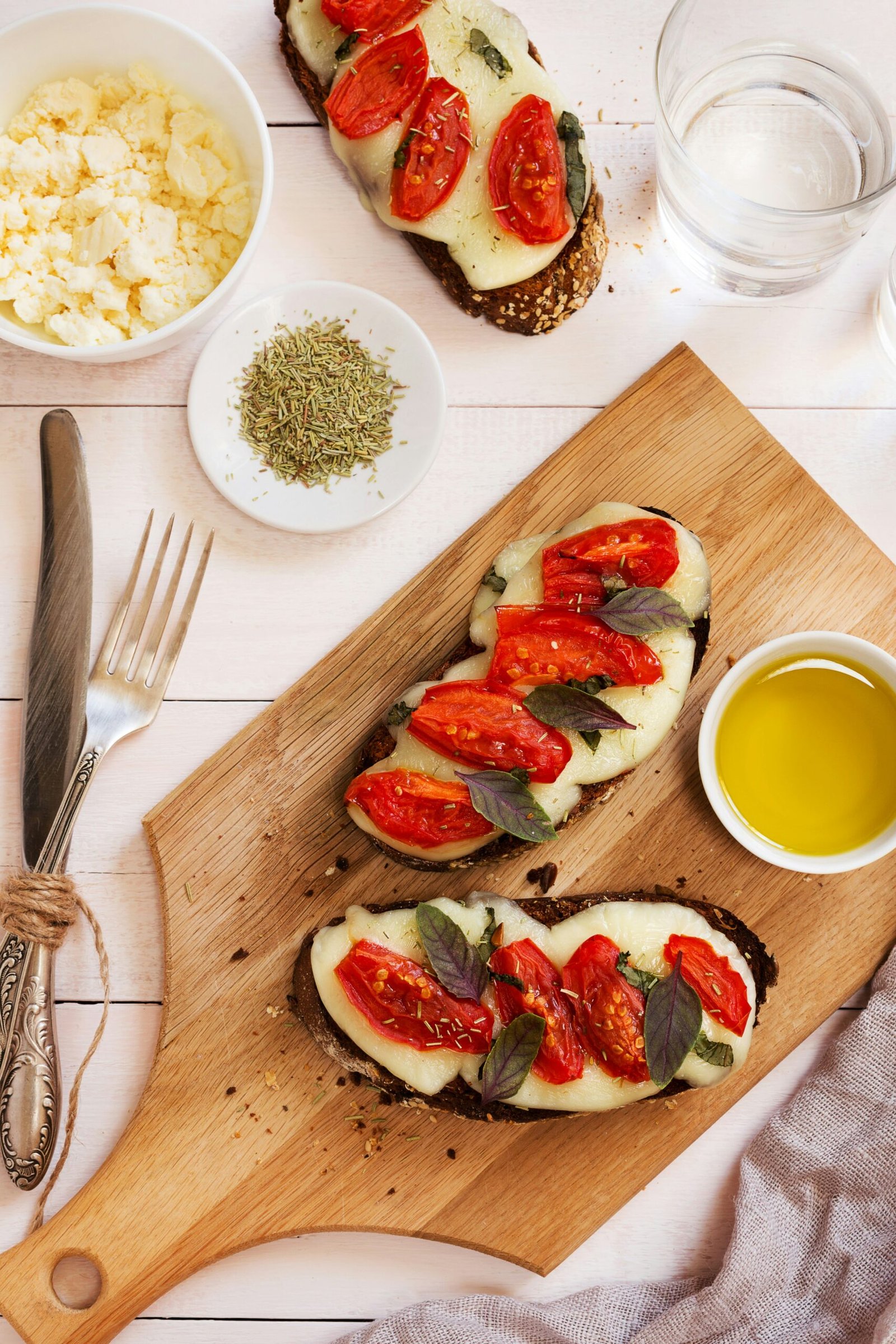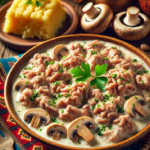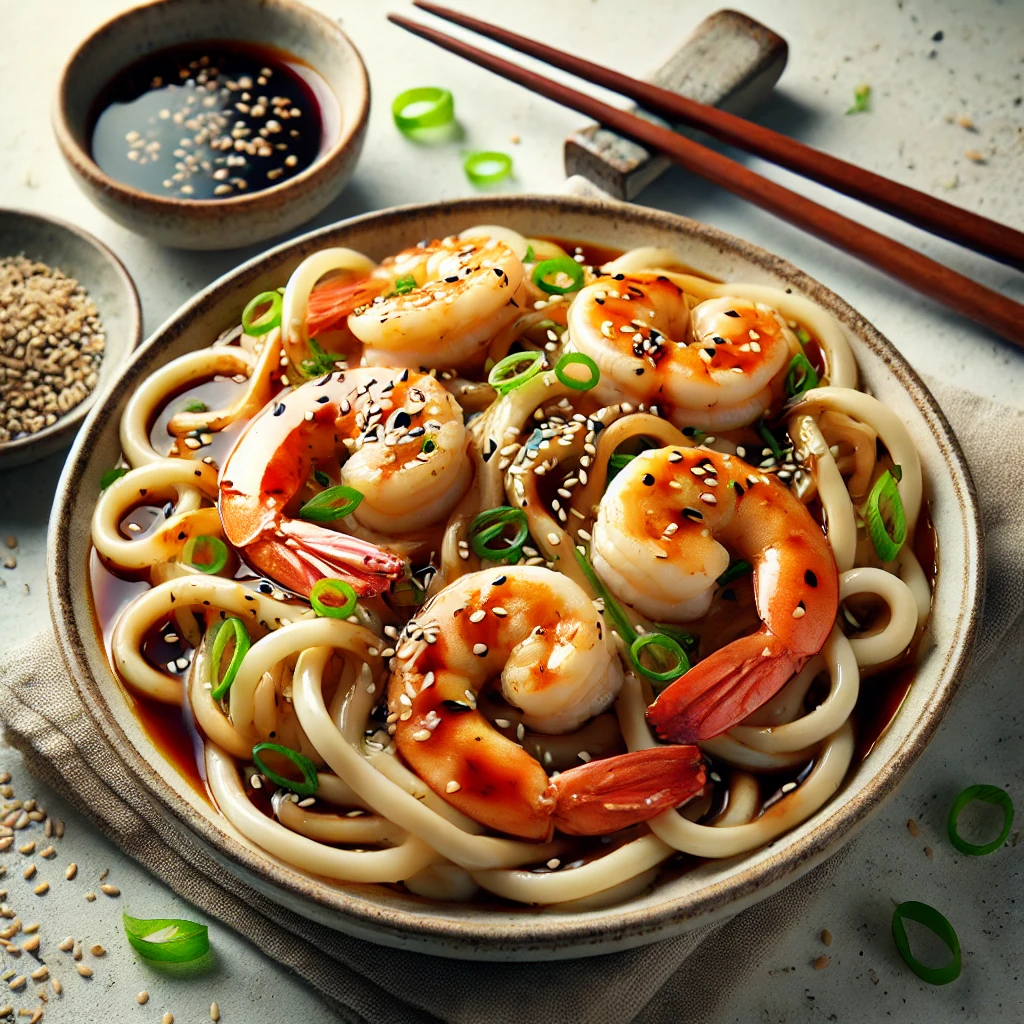The Importance of Appetizers and Snacks on the Menu
Introducing Appetizers and Snacks
Appetizers and snacks play an essential role in modern gastronomy, serving as the perfect start to any meal. These dishes not only stimulate the appetite but also contribute significantly to creating a memorable culinary experience. Offering a variety of textures and flavors, appetizers and snacks allow for the exploration of gastronomic diversity, blending traditions with innovations. From small portions of refined cheeses to elaborate hot dishes, the options for appetizers are endless, each with the potential to shape the overall perception of the meal.

One of the key aspects of appetizers is their ability to prepare the palate for greater delights. For example, an assortment of appetizers can offer a range of flavors—from salty to tangy—stimulating the taste buds and priming the consumer for the main courses. This tasting phase becomes an important ritual that can greatly enhance the overall dining experience. Additionally, the selection of snacks and appetizers has the potential to encourage social interaction, turning meals into an opportunity to connect people and spark conversation.
The diversity of appetizers and snacks also reflects local culture and international influences. Menus can be adapted to include seasonal and regional ingredients, resulting in unique dishes that are not only nourishing but also representative of their respective areas. In this sense, incorporating appetizers and snacks into the menu is not just about satisfying hunger; it is also a way to celebrate culinary traditions and offer an aesthetic pleasure through presentation.
Appetizers: What They Represent
Appetizers play an essential role in a menu by preparing the taste buds for the main course and providing a first impression of the quality and diversity of a restaurant’s or festive meal’s cuisine. These dishes can be divided into various categories, each with its own characteristics and significance. For example, warm appetizers, such as oven-baked bruschetta or potato croquettes, are designed to offer a feeling of comfort and warmth, often stimulating the appetite. In contrast, cold appetizers, such as cheese platters or assorted salads, can bring a sense of freshness and refinement.
In addition to these types, meat-based appetizers, such as mici or homemade ham, are often found in the culinary cultures of various countries, playing an important role in food traditions. On the other hand, vegan appetizers have gained popularity in recent decades, responding to trends in health and sustainability. These dishes contribute to a diversified and nutritionally satisfying offering. Examples of popular appetizers range from Spanish tapas to Chinese dim sum, each representing the cultural richness and biodiversity of different nations.
Therefore, the structure of the menu should reflect not only the tastes and preferences of the customer but also a varied selection of appetizers, designed to surprise and delight. Hence, appetizers not only serve as an introduction to the main course but also act as a bridge between different culinary cultures, highlighting the diversity and complexity of global gastronomy.
Snacks: Tradition and Innovation
Snacks have always been an essential part of the culinary experience, serving to guide the taste buds before savoring the main dish. The origins of snacks can be traced back in culinary history—from simple combinations of ingredients to elaborate preparations that reflect the cultural traditions of various regions. In many cultures, traditional snacks are used not only to curb hunger but also as a means to bring communities together, sharing family recipes and the stories behind them.
However, over time, snacks have evolved significantly, adapting to contemporary trends and consumer preferences. Today, there is an increasing trend toward innovation in snack preparation, both in restaurants and home cooking. People are more open to experimenting with unusual combinations of flavors, textures, and ingredients, which leads to the creation of innovative snacks. These dishes are no longer limited to simple chips or nachos; they now include a wide variety of options, such as tartines with cream cheese and smoked salmon or hummus with fresh vegetables.
Moreover, with the growing awareness of healthy eating, many modern snacks are designed with nutritious ingredients, such as superfoods or plant-based products. This adds an extra innovative dimension by combining nutrition with flavor pleasure. Thus, snacks continue to represent a unique opportunity to experiment with variety and creativity in the culinary field, highlighting both cultural blends and modern cooking techniques.
The Importance of Food Presentation
Food presentation plays an essential role in the dining experience, having a direct impact on consumer impressions. The aesthetics of a dish not only attract attention but also influence the perceived taste and quality. By offering a visually pleasing experience, restaurants can capture the interest of customers from the very first moment. Thus, appetizers and snacks are not just simple dishes but true works of art that guide diners toward an unforgettable experience.
Plating techniques, or the way food is arranged on a plate, are fundamental to transforming a simple dish into a visual feast. From choosing complementary colors to using varied textures, every detail counts. For example, the contrast between a vibrant salad and a creamy sauce can highlight both the appearance and the complexity of flavor. By using techniques such as layering or forming circles or lines, chefs can create a unique composition that attracts the eye and stimulates the palate.
In addition, knowledge of using platters, bowls, and utensils can transform a dish into a centerpiece of the meal. For instance, serving snacks on a rustic platter or appetizers in individual containers can create an atmosphere of intimacy and comfort. This approach not only enhances the appearance of the dishes but also supports a more personalized dining experience for customers. In conclusion, thoughtful food presentation is a crucial factor in attracting customers and creating a pleasant ambiance, having a profound impact on the overall success of a restaurant. It can determine not only the first impression but also the desire to return for that same aesthetic and flavorful experience.
Appetizers and Snacks in the Diet
Appetizers and snacks play an essential role in a healthy diet, contributing to the intake of necessary nutrients. These food options not only enhance the palate but also help maintain a healthy weight, being essential for managing daily caloric intake. It is important to choose appetizers and snacks that are not only delicious but also nutritious.
A well-designed appetizer should contain a combination of proteins, complex carbohydrates, and healthy fats. For example, snacks based on fresh vegetables, such as carrots or peppers served with hummus or avocado, are excellent sources of essential vitamins and minerals. These options are not only filling but also low in calories, while simultaneously stimulating a feeling of satiety.
Fruits also represent a very good choice for snacks. They are rich in fiber, antioxidants, and nutrients, thereby contributing to healthy digestion and overall well-being. An apple, a banana, or Greek yogurt with berries are just a few examples of snacks that combine flavor with nutritional benefits. It is essential to lean toward whole-food options that offer a healthy treat between main meals.
Including healthy appetizers and snacks in the daily diet not only improves nutrient intake but also helps sustain energy throughout the day. Thus, a conscious choice of these foods is not just a weight loss strategy but a proactive approach to a healthy and balanced life.
Appetizers and Snacks in Culinary Cultures
Appetizers and snacks occupy an essential place in global gastronomy, boasting a remarkable diversity that reflects the traditions and customs of each culture. In many cultures, these dishes are more than just simple starters; they serve as a means of socializing and exploring specific flavors, textures, and ingredients. For example, in Italy, bruschetta is an iconic appetizer made from toasted bread slices topped with fresh tomatoes, garlic, and basil, emphasizing the quality of ingredients and the simplicity of the dish.
In contrast, in Asian cuisine, appetizers such as Chinese dim sum offer a complex culinary experience, with a variety of steamed or fried dishes served in a way that encourages sharing. These pastries or rolls are not only delicious but also symbolize hospitality in many Eastern cultures, where food is often associated with social gatherings and family traditions.
In Latin America, Spanish tapas play a similar role, offering a selection of small snacks that encourage interaction and the tasting of diverse flavors. These dishes can range from light tuna pastries to marinated olives and cheeses, reflecting the diversity of local ingredients. In this light, appetizers and snacks are not just a prelude to the main course, but a fundamental aspect of culinary culture, promoting interaction, exploration, and the joy of eating together.
Therefore, examining the diversity of appetizers and snacks reveals how different cultures weave gastronomy with unique social customs, giving each dish a special meaning. This diversity enriches our culinary experience and emphasizes the importance of appetizers and snacks in global cuisine.
Appetizers and Snacks in Restaurants
Integrating appetizers and snacks into restaurant menus is essential to meet the diverse needs and preferences of consumers. Currently, culinary trends emphasize the importance of offering a varied selection of starters and snacks, which can influence the overall gastronomic experience. Restaurants often adopt an innovative approach in their menu concepts, including reinterpreted traditional snacks or fusion dishes that combine ingredients from different culinary cultures.
In addition to the diversity factor, establishments also focus on health and sustainability aspects, offering vegetarian, vegan, or gluten-free options in their appetizer selections. This adaptation to customer demands not only helps attract a larger clientele but also contributes to creating a positive image of the restaurant in the eyes of health-conscious consumers.
Another important aspect of integrating appetizers and snacks into menus is the influence of socialization. By offering small-sized dishes, restaurants encourage the sharing of meals, a popular trend among groups of friends or families. This type of dining experience not only promotes interaction but also significantly enhances the pleasure of taste, allowing customers to sample and savor various flavors. Additionally, through an attractive presentation of dishes, restaurants can stimulate customer interest and curiosity, further enriching their overall experience. These trends reflect changes in consumer eating habits and the constant desire to explore new tastes and textures.
Popular Appetizer and Snack Recipes
Appetizers and snacks are essential in any menu, offering a delicious introduction to the served meals. Here are a few popular and easy-to-make recipes that you can prepare at home:
- Classic Tomato and Basil Bruschetta:
For this recipe, you will need slices of baguette, fresh tomatoes, garlic, olive oil, salt, pepper, and basil leaves. Toast the bread slices until crispy, then rub them with garlic. Add diced tomatoes, olive oil, salt, and pepper to create a vibrant snack. - Cheese and Cold Cuts Platter:
This platter offers a variety of textures and flavors. Choose a mix of cheeses, such as Brie, Cheddar, and Feta, paired with different types of cold cuts, olives, and nuts. Serve with crackers or artisanal bread, making the platter a centerpiece at any meal. - Warm Meatballs:
For those who prefer hot dishes, meatballs are a popular choice. These can be made from beef or pork, combined with onions, garlic, eggs, breadcrumbs, and spices. Mix the ingredients, shape them into small balls, and fry until golden. They can be served with tomato sauce or alongside a fresh salad.
These recipes are just a few suggestions to add a touch of creativity to your kitchen. Experiment with the available ingredients to create appetizers and snacks that will delight your family and friends.
Conclusion: The Role of Appetizers and Snacks in Culinary Culture
Appetizers and snacks play an essential role in culinary culture, significantly contributing to the creation of a complete dining experience. These dishes are not merely the beginning of a meal; they are fundamental elements that enrich social and gustatory interactions among those gathered at the table. In various cultures, they serve not only to stimulate the appetite but also to encourage conversation and create an atmosphere of conviviality.
By including appetizers in the menu, there is an opportunity to explore a variety of flavors and textures, allowing for a diversified culinary experience. From cheese platters to tapas and assorted starters, these dishes are often designed to be enjoyed in a social setting. Furthermore, they can be tailored according to customer preferences or the cultural specifics of a region, thus reflecting the global culinary diversity.
Moreover, snacks add an extra layer to the dining experience through the interactions that occur during their service. This interaction goes beyond mere eating; it helps build relationships, both among those seated at the table and between hosts and guests. Additionally, the way appetizers are presented can influence the overall perception of the meal, underscoring the importance of aesthetics in gastronomy. Overall, appetizers and snacks are not just dishes but a means through which culinary culture is expressed and evolves, becoming a central element of social life.
Frequently Asked Questions (FAQ)
Why are appetizers and snacks important in a meal?
Appetizers and snacks prepare the palate for the main courses, stimulating the appetite and offering an introduction to the diverse flavors of the meal. They contribute to creating a memorable culinary experience and encourage social interaction around the table.
What types of appetizers are suitable for a festive meal?
For a festive meal, appetizers can include both warm dishes, such as bruschetta or potato croquettes, and cold options, like cheese and cold cuts platters. These provide a balance of freshness and flavor, offering a diverse range of tastes and textures.
How do appetizers contribute to the overall culinary experience?
Appetizers allow for an initial exploration of flavors and textures, preparing the consumer for the main courses. They are not just a culinary prelude but also a way to build anticipation and delight the senses, transforming the meal into a complete ritual.
What role do snacks play in culinary culture?
Snacks are essential to cultural traditions, serving as an expression of culinary history and a means of socializing. In many cultures, snacks are served to bring people together and facilitate conversation, while also providing insight into local traditions.
How does the presentation of appetizers influence the perception of the meal?
The aesthetics of a dish can affect the perceived taste and overall impression of the meal. Attractively arranged appetizers add visual value, delight the eye, and enhance the tasting experience, turning the meal into a multisensory event.
How do vegan appetizers differ from traditional ones?
Vegan appetizers are prepared without animal products, using ingredients such as vegetables, grains, and nuts. They add a health and sustainability aspect while maintaining diverse flavors and nutritional value, satisfying a broad range of preferences.
Which international dishes are popular as appetizers?
Popular international appetizers include Spanish tapas, Chinese dim sum, and Italian bruschetta. These dishes reflect cultural richness and global gastronomic diversity, often served in social and sharing contexts.
How do snacks and appetizers contribute to maintaining a balanced diet?
When chosen carefully, appetizers and snacks can provide essential nutrients. A combination of vegetables, lean proteins, and healthy fats—such as hummus with vegetables or fruit with yogurt—offers energy and helps sustain fullness throughout the day.
What are some popular healthy and nutritious snacks?
Healthy snacks include options like carrots with hummus, yogurt with berries, or slices of bell pepper. These provide vitamins, minerals, and fiber, making them ideal for supporting a balanced and healthy diet between main meals.
How can restaurants integrate appetizers and snacks in an attractive way?
Restaurants can incorporate creative appetizers into their menus by adopting fusion dishes and presenting them aesthetically. This approach attracts customers, encourages socialization, and adds a touch of sophistication and diversity to the dining experience.
Cum pot restaurantele să integreze antreurile și gustările într-un mod atractiv?
Restaurantele pot adăuga antreuri creative în meniuri, adoptând preparate fusion, prezentate estetic. Această abordare atrage clienții, încurajează socializarea și adaugă o notă de rafinament și diversitate la experiența de dining.








